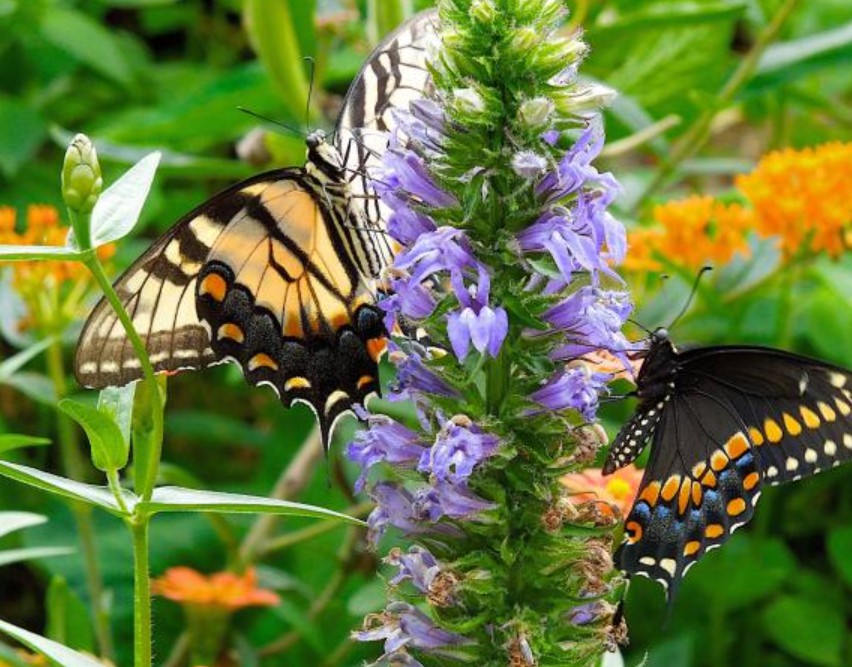In ecological conservation and sustainable landscaping, the significance of native plants in nurturing vibrant wildlife habitats cannot be overstated. As stewards of our environment, it is incumbent upon us to cultivate spaces that not only beautify our surroundings but also provide essential support to local ecosystems. We delve into the rich tapestry of native plants, exploring their crucial role in fostering biodiversity within wildlife gardens.
The Importance of Native Plants:
Native plants are species that naturally occur in a particular region, having evolved alongside indigenous wildlife over millennia. Unlike exotic or non-native species, which may struggle to adapt to local conditions, native plants have developed intricate relationships with native insects, birds, and other fauna. These relationships form the bedrock of healthy ecosystems, supporting pollination, seed dispersal, and predator-prey dynamics.
One of the primary advantages of incorporating native plants into wildlife gardens is their ability to attract and sustain diverse wildlife populations. From nectar-rich flowers that entice pollinators like bees and butterflies to berry-bearing shrubs that provide sustenance for birds throughout the year, native plants offer an array of resources for local fauna. Moreover, native plants serve as larval host plants for many butterfly and moth species, playing a pivotal role in their life cycles.
Creating a Haven for Wildlife:
Designing a wildlife garden brimming with native plants requires careful consideration of ecological principles and local biodiversity. Start by researching the native flora indigenous to your region, taking note of plant species that thrive in your specific climate, soil type, and sunlight conditions. Consulting with local botanical gardens, native plant societies, or extension offices can provide invaluable insights into suitable species for your area.
When selecting native plants for your wildlife garden, prioritize species composition and plant structure diversity. Aim to incorporate a mix of trees, shrubs, perennials, and groundcovers to create a layered habitat accommodating a wide array of wildlife. Please pay attention to bloom times, opting for plants that stagger their flowering periods throughout the growing season to provide a continuous food source for pollinators.
Incorporating Native Plants into Landscape Design:
Integrating native plants into landscape design enhances the ecological integrity of your property and bestows aesthetic charm and seasonal interest. Consider incorporating native trees such as oak (Quercus spp.), maple (Acer spp.), or dogwood (Cornus spp.) as focal points in your wildlife garden, providing shelter and food for birds and mammals.
For understory plantings, native shrubs like serviceberry (Amelanchier spp.), spicebush (Lindera benzoin), and inkberry (Ilex glabra) offer ornamental appeal while attracting an array of wildlife. Perennial wildflowers such as coneflower (Echinacea spp.), black-eyed Susan (Rudbeckia hirta), and blazing star (Liatris spp.) add bursts of color and texture while supporting pollinators and beneficial insects.
In addition to floral diversity, incorporating native grasses and sedges can contribute to the structural complexity of your wildlife garden, providing nesting materials and habitat for small mammals and ground-nesting birds. Species such as little bluestem (Schizachyrium scoparium), switchgrass (Panicum virgatum), and Pennsylvania sedge (Carex pensylvanica) thrive in a variety of soil conditions and add visual interest year-round.
Maintenance and Management:
While native plants are renowned for their resilience and adaptability, proper maintenance is essential to ensure the long-term success of your wildlife garden. Implementing sustainable gardening practices such as mulching with organic materials, practicing selective pruning, and minimizing chemical inputs fosters a healthy ecosystem while reducing environmental impact.
Regular monitoring of plant health and wildlife activity allows for early detection of potential issues such as pest infestations or invasive species encroachment. Consider enlisting the help of citizen science projects or local conservation organizations to engage in biodiversity monitoring efforts and contribute valuable data to scientific research.
Conclusion:
In conclusion, integrating native plants into wildlife gardens is a beacon of hope in our collective efforts to conserve biodiversity and foster resilient ecosystems. By embracing the beauty and functionality of indigenous flora, we embark on a journey toward harmonious coexistence with the natural world. Let us cultivate spaces that delight the senses and nurture the intricate web of life that sustains us all.

